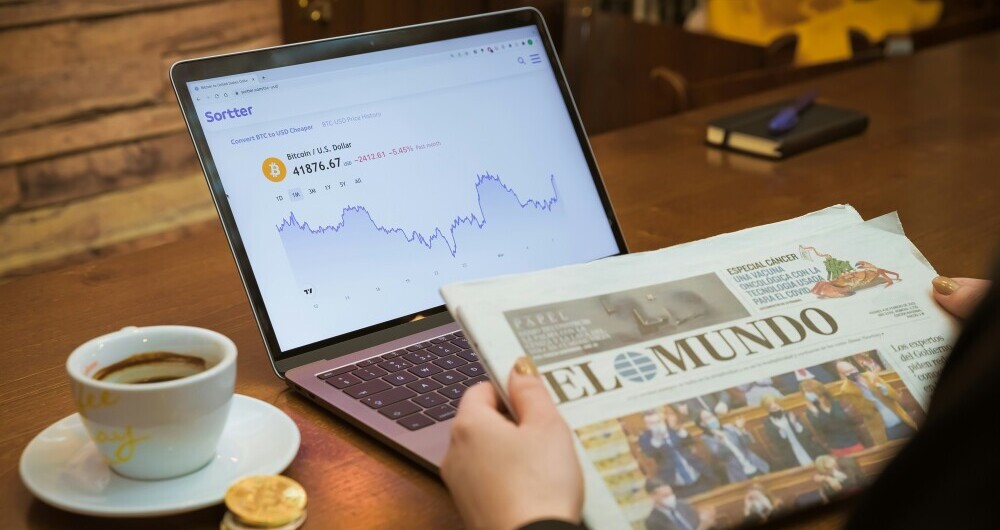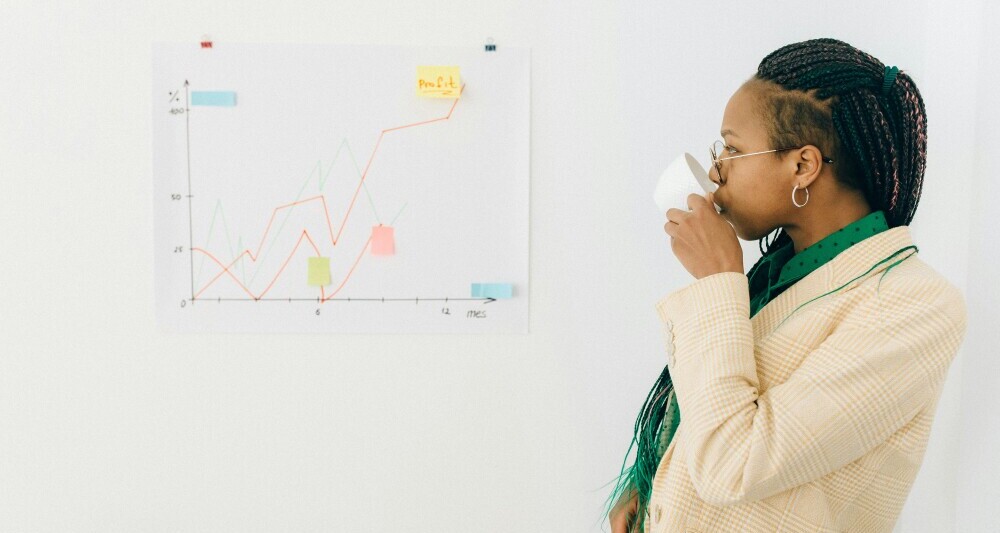The Investor Diary Entry #80: June 26, 2025

One of the biggest lessons I wish I had learned earlier in my Forex journey is the difference between technical and fundamental analysis in Trading Forex. Back in 2003, when I first started, I had no idea how these two approaches worked – or that they could even be used together. I used to think that trading the news was fundamental analysis. Turns out, I was wrong.
This article isn’t about teaching anyone how to trade. It’s just me sharing my own experiences, mistakes, and realizations as I figure things out. If you’re looking for a structured guide, this isn’t it. But if you want to see how another trader thinks through these concepts, then maybe this will be useful.
In my previous diary entry, I talked about my lack of knowledge of how the markets work. At the end of this entry I will talk about not only my next article, but the next phase that this diary is going to move into.
I have advanced a lot in the past month. You can see that I have not written any entries since May 10th. Yes I was busy relocating, but I was also busy learning. I am really excited about the future.
What is Technical Analysis?
Technical analysis is all about price action, charts, and indicators. It’s the art (or science, depending on who you ask) of reading the market’s movements without worrying too much about why things are happening.
My Experience with Technical Analysis
Today, I was looking at EUR/USD on the daily chart, trying to figure out where I could re-enter the uptrend. I saw a potential level around 1.1252, just below the R1 pivot point, where liquidity might be taken before the move continued. But then I hesitated – price hadn’t broken the previous high, and that made me question whether the uptrend was still strong.
I dropped down to the H4 chart and saw some volume spikes, gaps, and Fibonacci levels that made me second-guess my entry. Then, on the 1-hour chart, I noticed two strong bearish candles that made me even more cautious. In the end, I set my stop loss at 1.2225, just below a key support level, because if price broke that, I figured the move was invalid.
This is how I use technical analysis – looking at support/resistance, volume, gaps, and candlestick patterns to make decisions. It’s not perfect, and sometimes I overthink it, but it’s what I’ve been relying on for years.
What is Fundamental Analysis?
Fundamental analysis, on the other hand, is about economic data, news, and macroeconomic trends. It’s not just trading the news – it’s understanding how that news affects currency values over time.
The Difference Between Fundamental Analysis in Forex vs. Stocks

In stocks, fundamental analysis means looking at a company’s financials – earnings, revenue, debt, and growth potential. But in Forex, it’s about interest rates, inflation, employment data, and geopolitical events.
For example, today, the UK CPI (Consumer Price Index) came out at 3.5%, higher than the forecasted 3.3%. That means inflation is rising, which could lead to higher interest rates. Normally, when a country raises interest rates, its currency strengthens – but the market reaction isn’t always instant or straightforward.
How I (Try to) Use Fundamental Analysis
I checked the GBP/USD after the CPI release. Price dipped briefly but then kept climbing. If I were purely a fundamental trader, I might have expected a stronger reaction, but the market didn’t immediately collapse. That’s why fundamental analysis isn’t just about the news itself – it’s about how the market interprets it.
I’ve never been consistent with fundamental analysis because it requires keeping up with economic reports, reading analyst opinions, and understanding long-term trends. Right now, I’m still trying to find a way to blend it with my technical approach.
Trading the News vs. Fundamental Analysis
When I first started, I thought trading the news was the same as fundamental analysis. It’s not.
Trading the news means reacting to high-impact events (like CPI or NFP) for quick scalps. Fundamental analysis means understanding how those events shape long-term trends.
I used to jump into trades right after news releases, hoping for big moves. Sometimes it worked, sometimes it didn’t. Now, I see that real fundamental analysis is more about context – not just the headline number, but what it means for future central bank decisions.
Do I Combine Both? (Not Yet, But Maybe One Day)
Right now, I’m still mostly a technical trader. I look at charts, patterns, and liquidity levels. But I’m starting to see the value in fundamental analysis – not for immediate trades, but for understanding the bigger picture.
For example, if I see the Fed signaling rate hikes, I might be more cautious about shorting the USD, even if the chart looks bearish. Or if inflation is rising in the Eurozone, I’d pay closer attention to EUR pairs for potential long-term trends.
Final Thoughts
Looking back, I wish I had learned the difference between these two approaches much earlier. Maybe I would’ve avoided some bad trades. Maybe I would’ve seen opportunities I missed.
But trading is a journey, and I’m still figuring things out. Right now, I’m comfortable with technical analysis, but I’m slowly trying to incorporate fundamental elements – not because I have to, but because I’m curious.
If you’re like me – still learning, still experimenting – then maybe this resonates with you. If not, that’s fine too. At the end of the day, trading is personal. What works for me might not work for you, and that’s okay.
The next point that I want to move into is the trading plan. Yes, I never new that term in 2003. But this will shift this diary into that dimension, and I will concentrate on the trading plan and trading activity. Unless, something else come up, this is the next phase of this diary.,,Trading!!!
The Investor
Thursday 26 June 2025
About The Author
I started to look into individual stocks in January 2022. I created this diary initially for myself to track my investing progress, and second, as a place where I can share my ideas publicly hoping that others will share their ideas and learn from each other, and lastly as an online business where some links that I share are affiliate links, and if anybody bought anything by clicking those links, I will get a commission based on that successful sale, which of course will not affect the price that you are buying the product or service at.
This blog is also part of something else I’m learning: blogging. I’m using a platform to learn that part. And if you’re interested in that it is called Wealthy Affiliate, look it up.
For more detailed information on my affiliate disclosure, please refer to the Full Affiliate Disclosure page.
Furthermore, this site is in no way or form giving any financial or investing advice, nor is it encouraging or discouraging people to buy or sell any financial instrument. This is a personal diary in which I track my own progress and share it for informational, educational, and entertainment purposes.


This was a really insightful breakdown — thank you! I’m currently testing the waters with forex and trying to figure out if it’s something I truly want to commit to long-term. So this comparison between technical and fundamental analysis was incredibly helpful for giving me a clearer picture of what each approach involves.
I have to admit, the idea of learning charts, indicators, and candlestick patterns feels a bit overwhelming. ???? At the same time, I can also see how relying solely on news and economic data might not be enough for timing trades well. Your point about blending both methods makes a lot of sense.
I’m still a little hesitant to go all in — mostly because I’m unsure if I’ll be able to consistently apply what I learn without second-guessing every decision. Do you think it’s better for beginners to start with one analysis style and master it first, or try to learn both simultaneously at a basic level?
Appreciate how you simplified a complex topic. Definitely bookmarking this one as I continue learning!
Hello Alyssa, Thank you very much for your comment.
I will definitely encourage you to stay hesitant to go all in.. The only sensible way – in my point of view – is to start with a demo account. Whatever system, trading plan, analytical school you will follow, first profit in a demo account, and prove to yourself that you are able to be disciplined to your own plan. Then consider going to a live account. and even when you go to a live account, start with testing the waters of live account with a small tradable amount.
Wow, this was really helpful. As someone just starting out dipping my toes in Forex, I wasn’t really aware of the big difference between technical and fundamental analysis. This almost feels like a completely different language at first. I really appreciate you sharing your early experience so honestly. It’s encouraging to know even experienced traders once felt lost in the beginning. Your insight about how the two approaches can complement each other gave me a whole new perspective. Looking forward to learning more—thank you for making it feel less overwhelming!
Very inspiring!
ALl the best!
Hello Michael, Glad that you found it useful.. Soon we will be dipping into real trading once I finalize some tests of my own
Take care, and remember always start with a Demo Account.. Don’t risk your own money when there is an option to learn without using your hard earned money.
Thanks for sharing your experience with both technical and fundamental analysis—it’s refreshing to see someone being so honest about the learning process. I especially like how you pointed out that fundamental analysis isn’t just about reacting to news but understanding its longer-term impact on the market. For someone starting out, do you think it’s more effective to focus on mastering one method first, or should beginners try to combine both approaches from the beginning? Your journey makes me curious about how you plan to develop your trading plan next!
Hello Hanna,
Personally, I think I missed out a lot not training myself on integrating Fundamental Analysis into my training. Now, it is going to be very hard for me to do that. I believe that integrating fundamental analysis from the beginning makes it much easier.
Once a trader made a habit of or went ahead and developed a trading methodology without integrating Fundamental analysis, would be very hard to retrace the steps and redevelop the methodology.
Those are my 2 cents worth opinion on your question. At the end it is an opinion.